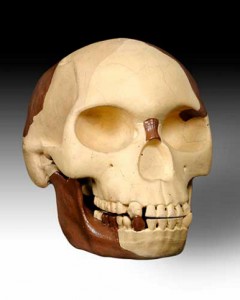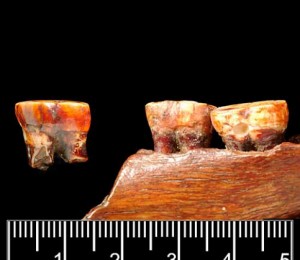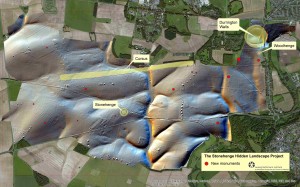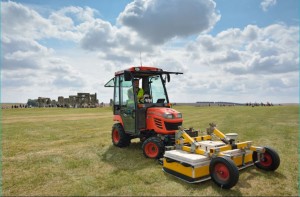The “missing link” in human evolution? Well, that’s what English archaeologists believed for many years had been discovered when a skull with both human and ape characteristics was revealed by an amateur archaeologist, Charles Dawson. Unfortunately, for decades this hoax would confuse scientists’ insight into the course of human evolution.
In 1912, Dawson announced that he had pieced together parts of a skull found near Piltdown village; while it had an ape-like jaw and teeth, the brain cavity of the skull was large, similar in size to that of a modern human. This seemed to fit perfectly with the idea of humankind’s intelligence pushing forward its evolution. In addition to the skull, the Piltdown site produced animal bones and primitive tools (as well as an artifact that looked suspiciously like a cricket bat), adding to its apparent validity. Many years after Dawson’s death however, scientists working at the Natural History Museum in London proved that the skull was faked; not only were the bones more recent than initially believe, but while the skull fragments were human, the jaw bone had probably belonged to an orangutan. These scientists also found scrape marks on the teeth, suggesting that someone had filed the teeth to give them a more human appearance.
The trust in this hoax created a false understanding of human evolution, demonstrating the danger of fraudulent archaeology. British scientists may have been particularly accepting of the new discovery, since they had not yet found any significant prehistoric human remains, unlike their European counterparts; not only that, the new discovery seemed the closest link to modern man yet. Their belief was strong enough that when a scientist in Africa discovered a radically different early human skull, some scientists failed to acknowledge that true step on humankind’s evolutionary path. Until the skull was proved a fake in 1949, this hoax represented one of the biggest anomalies of the evolutionary sequence, hindering scientists trying to comprehend humankind’s past.
Perhaps one of the most interesting parts of this entire story is that the true perpetrator or perpetrators of this hoax have never been definitively identified. Dawson almost certainly was involved, as many of his other “discoveries” have also since been proven fraudulent; however, any number of other leading scientists and philosophers may have had a hand in the deception. Regardless of whether their intentions where to deceive or merely to play a practical joke on the scientific community, this hoax shaped and disrupted understanding of human evolution for nearly forty years, signifying the true menace of archaeological hoaxes.
Bibliography
http://www.britannica.com/topic/Piltdown-man
http://www.bbc.co.uk/history/ancient/archaeology/piltdown_man_01.shtml
Image Credits
Piltdown Skull: http://piclib.nhm.ac.uk/results.asp?image=039916&itemw=4&itemf=0001&itemstep=1&itemx=2
Piltdown Man’s Jaw and Teeth: http://piclib.nhm.ac.uk/results.asp?image=040480&itemw=4&itemf=0001&itemstep=1&itemx=22
Interesting Links
This link contains details on a number of the suspects, including Dawson and Arthur Conan Doyle: http://www.theguardian.com/science/2012/feb/05/piltdown-man-archaeologys-greatest-hoax
A somewhat over-dramatic BBC documentary about the Piltdown Man, focusing primarily on the later discovery of the fraud: https://www.youtube.com/watch?v=dOn97lU21L4




